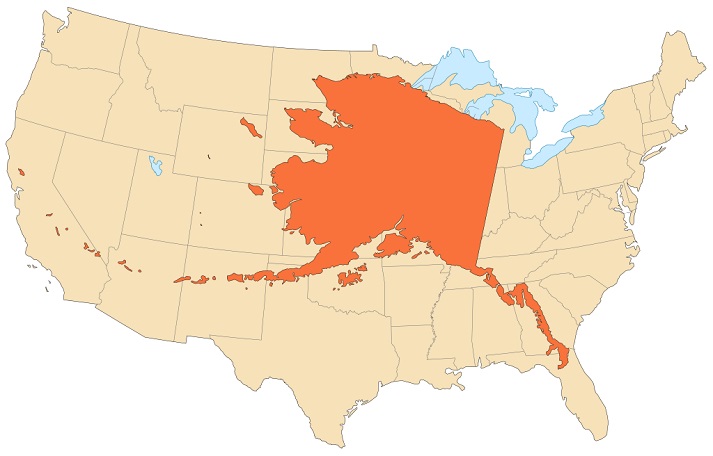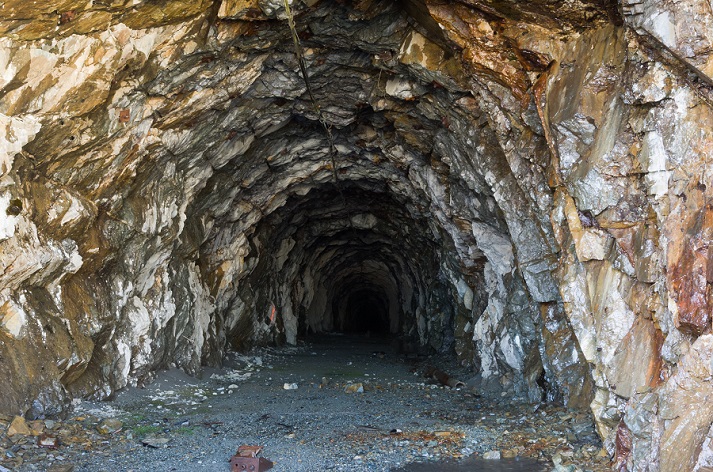Contributor: Ashley Nail Murphy. Lesson ID: 14216
Alaska’s wild landscapes and rich resources shape daily life in amazing ways! Explore how geography, natural resources, and culture connect in the Last Frontier.

Taking a road trip across the United States is usually a breeze—comfortable seats, air conditioning, music, snacks, and maybe even a frozen slushie from the last gas stop.
Planes, trains, and boats might be options, but in Alaska, there’s another way—dog sledding!
Dog sledding has played a crucial role in Alaska’s history, economy, and culture. Before modern transportation, sled dogs carried supplies, helped people travel, and even delivered medicine to remote villages.
Today, most Alaskans rely on other transportation methods, but dog sledding remains a cherished tradition and an exciting sport.
Watch as a tourist expereinces this tradition for the first time!
No other state is as closely tied to dog sledding as Alaska! That’s because Alaska’s geography and natural resources shape the way people live, work, and travel every day.
Geography
Alaska is the largest state in the U.S., covering more than 663,000 square miles—twice the size of Texas!
Compare the size of Alaska to the entire continental United States.

Alaska sits in the far northwest corner of North America, with parts of the state crossing into the Arctic Circle.
Alaska's location means some places experience months of darkness in winter and endless daylight in summer!
Alaska's unique position also gives residents front-row seats to the Northern Lights or Aurora Borealis—a dazzling natural light show in the sky!
Majestic mountain ranges stretch across the state, including the towering Alaska Range. It includes Denali, the highest mountain in North America, soaring over 20,000 feet into the sky!
Alaska's glaciers are another icy wonder. These massive, slow-moving rivers of ice cover about 5% of the state and are crucial for storing fresh water and keeping the planet cool.
Alaska also has more coastline than all the other U.S. states combined—over 6,000 miles! Steep fjords, volcanic islands, and rugged beaches along these coasts create dramatic landscapes.
The Aleutian Islands are part of the Pacific Ring of Fire, an area filled with active volcanoes!
Rivers like the Yukon and Kuskokwim are essential for transportation and wildlife.
From towering mountains to icy glaciers and vast tundras, Alaska's geography is one-of-a-kind!
Natural Resources
Alaska's natural resources fuel its economy and shape the way people live.
Oil! Most of Alaska's oil comes from the North Slope near the Arctic Ocean, including the massive Prudhoe Bay oil field.

The oil and gas industry supports thousands of jobs and helps power homes and businesses.
Another key industry is fishing! Alaska's cold, clean waters are perfect for catching salmon, crab, and halibut.
The seafood industry employs over 58,000 workers and supports restaurants, stores, and tourism.
Gold also shaped Alaska's history. During the famous Gold Rush, people worldwide traveled to Alaska to strike it rich!
While the gold rush ended long ago, gold mining remains essential today.

Wildlife is another critical resource.
Bears, moose, caribou, and whales play a significant role in Alaska's economy and culture. Many people hunt and fish to provide food for their families.
For Alaska Natives, wildlife is deeply connected to traditions and survival.
Even Alaska's natural beauty is a resource! Tourists visit to see glaciers, mountains, and wildlife, creating jobs in hotels, restaurants, and adventure tours.

Protecting these resources is essential so future generations can continue to rely on them.
Next, explore the Got It? section to test your knowledge of how Alaska's geography and natural resources shape life in the state!